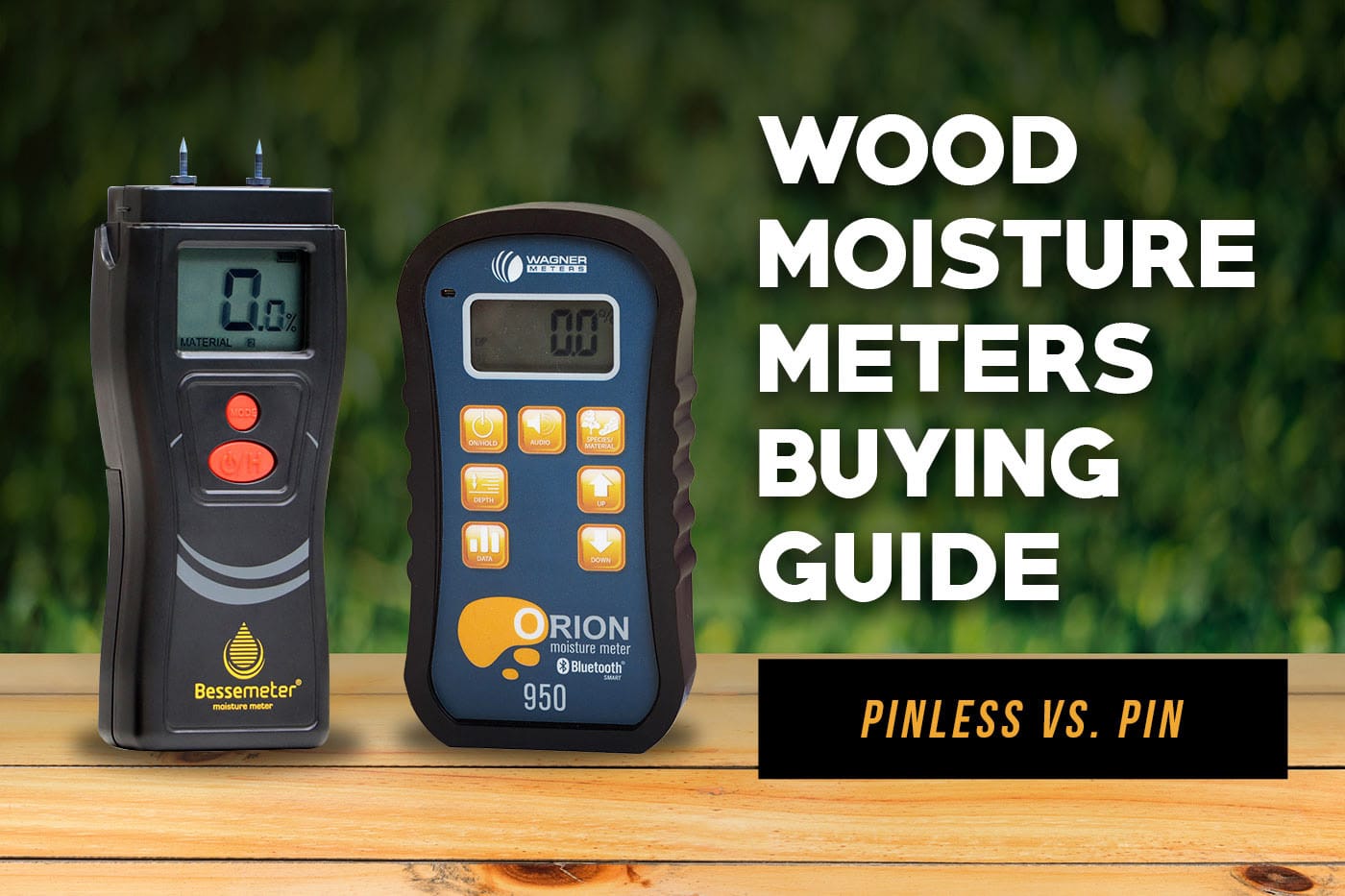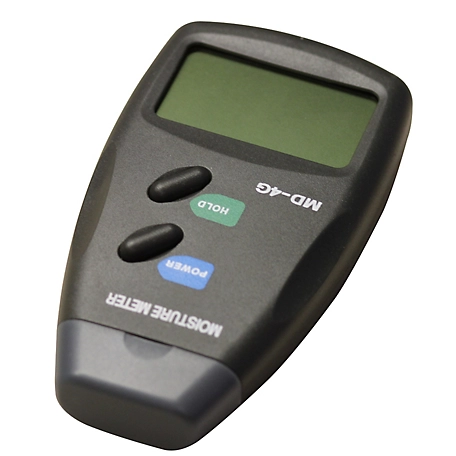Comprehending the Value of a Moisture Meter in Protecting Against Mold and Water Damages in Your Home
In the realm of home maintenance, the visibility of dampness can typically be a quiet yet awesome opponent, qualified of creating prevalent mold growth and perilous water damages if left unchecked. Understanding the importance of a wetness meter in this battle is not just an option however a critical need.

Value of Wetness Discovery
Effective dampness detection techniques are critical for securing buildings and avoiding potential mold and mildew development and water damages. Moisture can permeate right into different structure materials, resulting in architectural problems and carcinogen - Moisture Meter. By using a dampness meter, home proprietors can proactively identify locations prone to excess dampness, permitting for timely intervention and reduction techniques
Moisture meters offer exact analyses of moisture levels in various products such as drywall, concrete, and wood. This data assists in determining areas of worry, even in hard-to-reach or hidden locations. Early discovery of dampness build-up allows prompt repair services or changes to avoid further damages.

Exactly How Dampness Meters Job
Wetness meters play an essential role in the positive recognition of excess wetness, helping in the avoidance of potential mold development and water damage by providing precise readings of dampness degrees in various structure materials. These tools function based on different concepts, depending on their type. Pin-type wetness meters, for circumstances, have 2 pins that pass through the product to determine the electrical resistance between them. When moisture exists, it boosts the product's conductivity, leading to a reduced resistance reading. Pinless moisture meters, on the other hand, usage electro-magnetic sensing units to check the product without creating damages. These sensors emit electro-magnetic signals that permeate the product and measure the dielectric properties, indicating moisture content. Some advanced dampness meters integrate both pin and pinless modern technologies for extensive wetness detection. Recognizing exactly how moisture meters feature is crucial for accurate and timely dampness degree assessments, enabling reliable preventive procedures versus mold and water damages.
Finding Early Caution Indicators
Upon initial evaluation of a property, recognizing refined indications of excess dampness ends up being crucial in the very early detection of prospective mold and mildew growth and water damage. Some usual early caution indicators include stuffy smells, water discolorations on ceilings or wall surfaces, peeling off paint or wallpaper, and distorted or blemished surfaces. Stuffy smells commonly indicate the existence of mold and mildew or mold, even if no noticeable signs appear. Water stains can signify leakages or infiltration, while peeling off paint or wallpaper might be a result of wetness endangering the adhesion of these products to the surface area. Deformed or tarnished surfaces, such as buckling floorboards or stained drywall, are clear indications of water damage. Moisture Meter. Furthermore, a boost in allergy signs and symptoms or breathing issues among residents may recommend the visibility of mold and mildew due to excess moisture. By quickly determining and attending to these early warning indicators, use this link homeowners can mitigate the danger of substantial mold growth and water damages in their residential properties.


Preventing Mold And Mildew Growth
Recognizing very early indication of excess dampness within a residential property not just makes it possible for punctual discovery of possible mold development and water damages but also acts as a proactive procedure in avoiding the expansion of mold and mildew. To successfully avoid mold growth, it is critical to address any type of resources of moisture promptly. This can consist of repairing leakages in roofing systems, home windows, or pipelines, guaranteeing appropriate air flow in damp locations like cooking areas and bathrooms, and utilizing dehumidifiers in high-humidity rooms. Regularly inspecting and keeping the property's pipes, roofing, and seamless gutters can also aid in avoiding water intrusion that could cause mold and mildew development.
In addition to resolving moisture sources, keeping indoor humidity levels below 60% can dramatically prevent mold and mildew development. Proper air flow, ample insulation, and using air conditioning system or followers can help regulate interior humidity degrees. Keeping track of moisture levels in locations susceptible to wetness, such as basements and crawl spaces, utilizing a wetness meter can also help in early detection of raised dampness levels and potential mold growth. By taking proactive measures to protect against excess moisture and mold and mildew development, house owners can protect their residential or commercial property and indoor air high quality.
Benefits of Regular Surveillance
Regular surveillance of moisture levels in a home can play an essential duty in maintaining a healthy and balanced indoor environment Learn More and stopping possible mold and mildew and water damages. By frequently examining dampness levels, property owners can discover any type of issues quickly and take required activities to avoid mold and mildew development and water damage.
In addition, regular tracking allows home owners to track patterns and patterns in moisture degrees over time. By establishing a baseline and monitoring adjustments, individuals can identify any areas of worry or potential vulnerabilities in the building's framework. This data-driven technique allows targeted treatments and maintenance efforts to deal with underlying concerns prior to they intensify into more considerable problems. Ultimately, the constant surveillance of dampness levels equips home owners to safeguard their residential or commercial property, guard their health, and protect the integrity of their interior atmosphere.
Conclusion
In conclusion, using a dampness meter is crucial in avoiding mold and water damages in homes. By home spotting very early caution indicators of moisture, property owners can take aggressive actions to stop mold growth and pricey fixings. Regular monitoring with a moisture meter can assist keep a healthy indoor setting and protect the structural integrity of the home. It is an important tool for making sure the security and wellness of homeowners.
By using a dampness meter, home proprietors can proactively recognize locations susceptible to excess wetness, permitting for timely intervention and reduction strategies.
Moisture meters supply exact readings of dampness levels in different products such as drywall, concrete, and timber.Wetness meters play a pivotal function in the aggressive recognition of excess wetness, aiding in the avoidance of potential mold development and water damages by offering accurate readings of dampness levels in different structure materials. Understanding how moisture meters function is necessary for timely and exact dampness degree evaluations, allowing effective preventative measures against mold and mildew and water damages.
Keeping track of dampness levels in areas vulnerable to wetness, such as cellars and creep rooms, using a wetness meter can likewise assist in early detection of elevated moisture levels and potential mold and mildew growth.